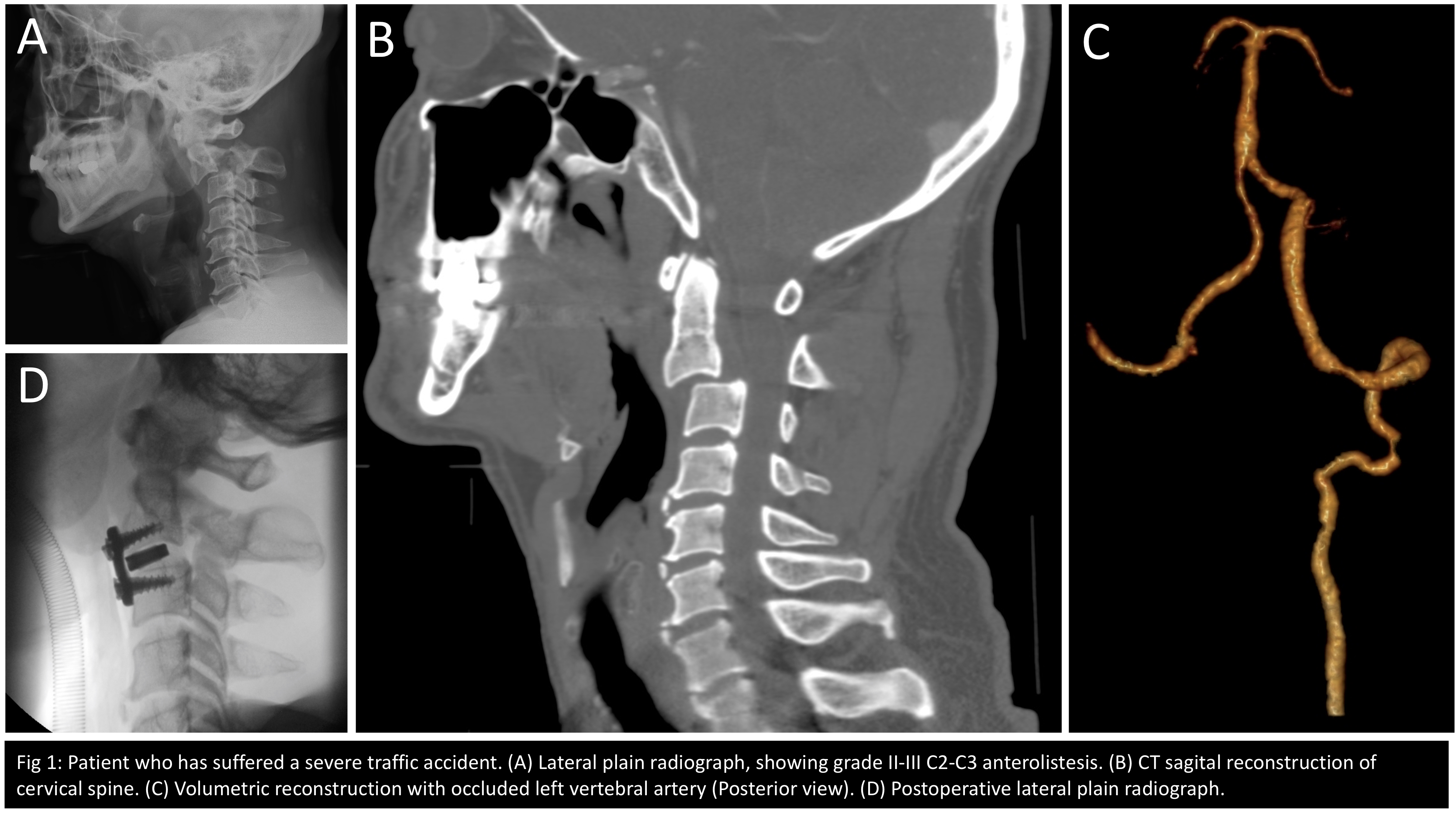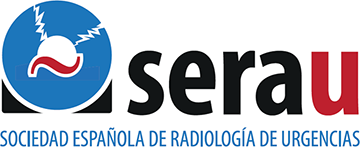Hospital: Hospital General de Segovia.
Nº: C2019-676
Aut@r o Autores: L.I. Pérez Sánchez, J. Gutiérrez Vázquez, D. García Casado, J.J. Gómez Herrera, V. Fernández Cisneros, F.J. Rodríguez Recio.
Presentación
A 59-years-old man with a history of a severe traffic accident came to the emergency department referring cervical pain after the impact. On examination, mobility, strength and sentivity of distal extremities are preserved, Glasgow 15/15. With the suspicion of spinal fracture, lateral and anteroposterior plain radiographs were taken, showing grade II-III C2-C3 anterolistesis. A CT was also performed, showing Hangman's fracture and occluded left vertebral artery.
Discusión
:Fracture of the cervical spine are present in 1% to 3% of all trauma cases, of which 9% to 18% involve C2. Fractures of the odontoid process are much more common, representig 35% to 78% of all C2 fractures in general population, as much as 89% of patient being older than 70 years old. Meanwhile, Hangman's fractures represent 11% to 25% of all C2 fractures. A Hangman's fracture is better described as bilateral fracture involving the pars interarticularis of C2 with an associated traumatic subluxation of C2 on C3. It is the second most common fracture of C2, after fractures of the odontoid process, and is almost always stable, with no need for surgical intervention. These injuries are most commonly seen in motor-vehicle accidents, diving injuries, or contact sports. It is vitally important to keep in mind the unique anatomy of the atlas-axis complex when assessing their associated injuries. The C1 to C2 complex does not contain an intervertebral disc, there are unique ligaments allowing for support of the cranium as well as providing the main cervical rotation movements. There is also a close relationship between the transverse foramen and the vertebral artery and the C2 pedicle and pars interarticularis. Some authors suggest aggressive screening for all blunt cervical spine injury patients. The cost-effectiveness of this approach, at present, is unclear. A screening algorithm to identify patients at risk for vertebral artery injuries, would be helpful when assessing patients following cervical trauma.
Conclusión
Plain radiograph will provide limited but important information in cervical spine fractures. Approximately, 93% of these fractures are apparent with combined lateral, anteroposterior and specific radiographs. CT scan is the most important modality for determining fracture etiology and ruling out injury with regards to a C2 fracture. The higher incidence of detected vertebral artery injuries may arise because of the evolution of diagnostic methodology, such as magnetic resonance angiography and computed tomography and angiography.
Bibliografía
- LeFever D, Menger RP. Hangman's Fractures. StatPearls [Internet]. Treasure Island (FL): StatPearls Publishing, 2018-2019 Jan 20. Available from: https://www.ncbi.nlm.nih.gov/books/NBK519496/ - Ding T, Maltenfort M, Yang H, Smith H, Ratliff J, Vaccaro A


